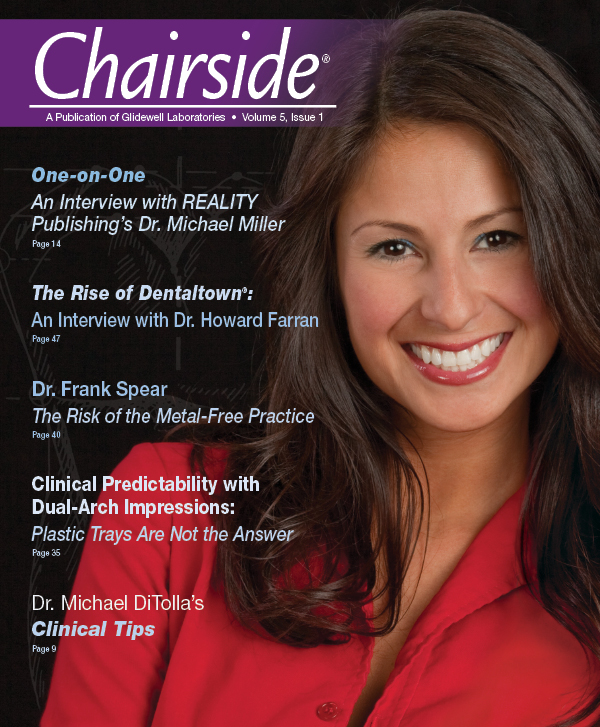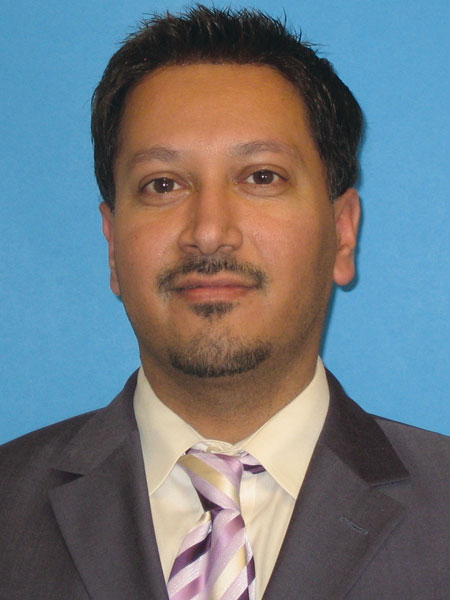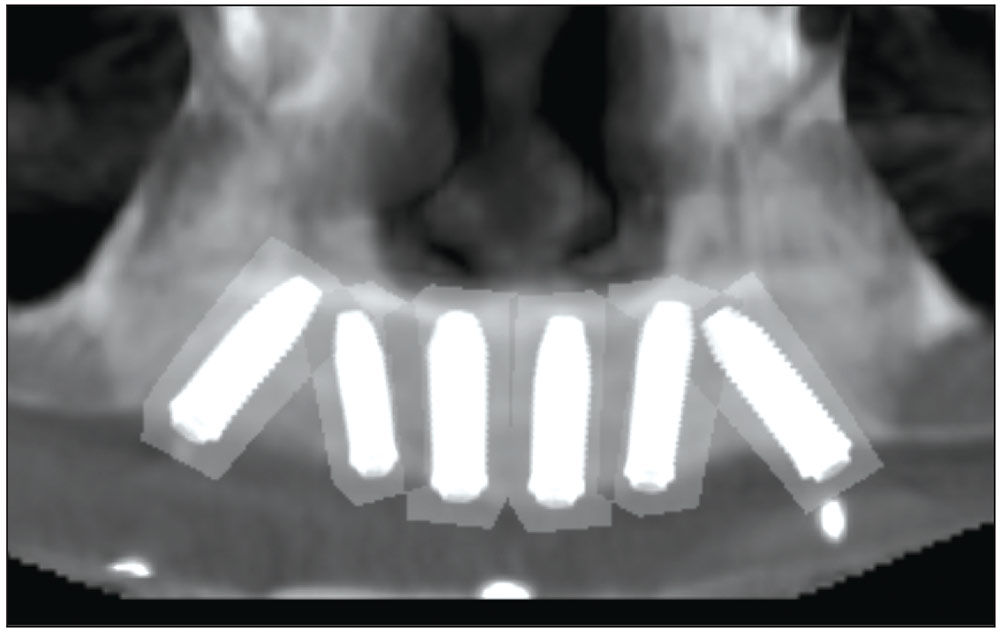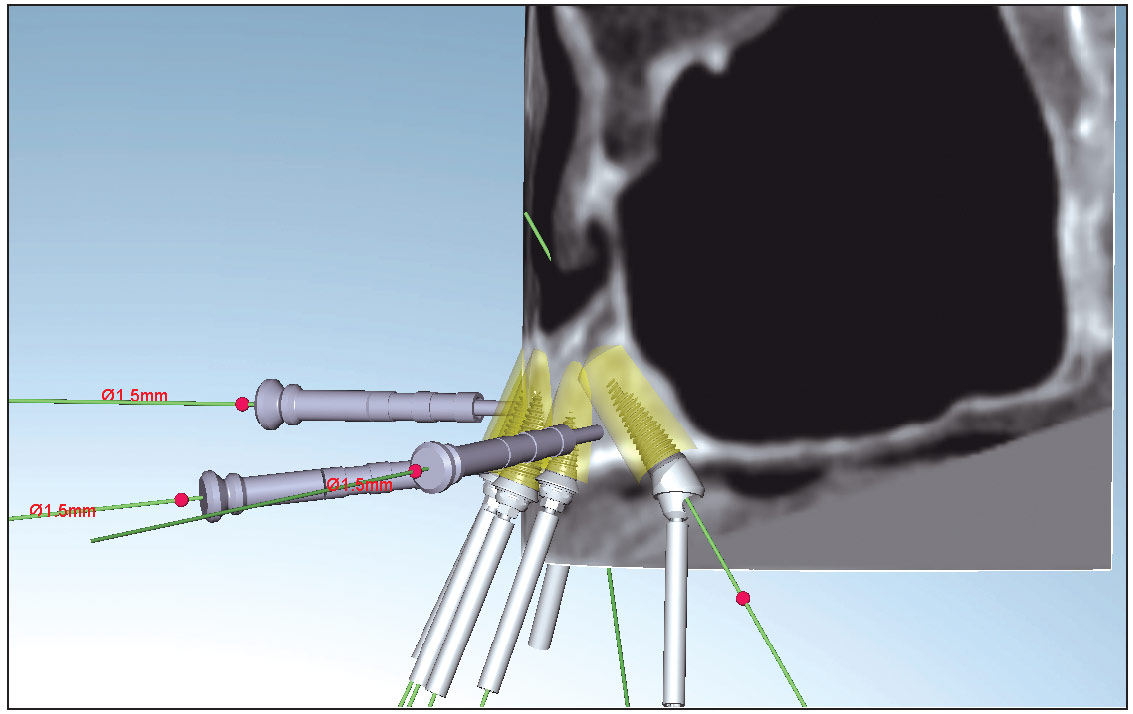Utilizing Digital Treatment Planning and Guided Surgery to Restore Fully Edentulous Arches with the All-on-4 Technique
We now have access to technologies that greatly enhance our abilities to restore our patients with high precision in a shortened treatment time utilizing a minimally invasive surgical procedure. This case report will demonstrate several of these technologies. Utilizing Glidewell Laboratories’ Digital Treatment Planning Services allowed me to easily integrate these technologies into my practice.
There are several treatment planning software programs on the market. These programs allow you to virtually plan your cases utilizing CT scans. Scanning the patient with an appliance (radiographic guide) that has the teeth to be replaced in the ideal positions allows you to digitally plan the case from both the surgical and prosthetic perspectives, making it a truly restoratively driven process. Because Nobel Biocare implants were to be placed, the NobelGuide™ System (Nobel Biocare; Yorba Linda, Calif.) was utilized for this case. The case was planned following the All-on-4 technique.1-5 This design involves tilting the distal implant on each side of the arch distally in order to improve the anterior-posterior spread and provide posterior support for the prosthesis. Using stereolithography, a surgical template was produced to transfer the digital plan to the clinical setting. An immediate screw-retained provisional restoration was delivered at the time of surgery through a flapless procedure.
This technology can be used to completely rehabilitate a fully edentulous patient by placing the implants and delivering maxillary and mandibular provisional restorations in one appointment. These cases require meticulous attention to detail and must be staged correctly. I had restored more than 20 individual arches using the All-on-4 protocol prior to restoring both arches in one appointment. Working with Glidewell Laboratories and utilizing its Digital Treatment Planning Services allowed me to make the major planning decisions presurgically.
Pre-Surgical Work-up and Digital Treatment Planning
The patient was a young male who had been edentulous for some time. His chief desire was to have a fixed restoration. Due to the amount of ridge resorption, screw-retained dentures were the restoration of choice.
Standard procedure was used to determine the ideal positions of the teeth. Impressions and bite blocks were used to fabricate and articulate the study models. A wax try-in was done to finalize the set-up.
Radiographic guides were fabricated and the patient was sent for a CT scan. The DICOM files of the three scans (patient with radiographic guide, then maxillary and mandibular radiographic guides alone) were uploaded and sent along with my Digital Rx to Glidewell’s Digital Treatment Planning Department.
Following a web-based conference, the plan was finalized. Due to the size of the implants that could be placed and the patient profile, six implants were planned in the maxilla: four in the anterior and two angled distally paralleling the anterior walls of the maxillary sinuses (Figs. 1–3).
The mandibular plan included four implants: two in the lateral incisor regions and two angled distally to improve the anterior-posterior spread.






